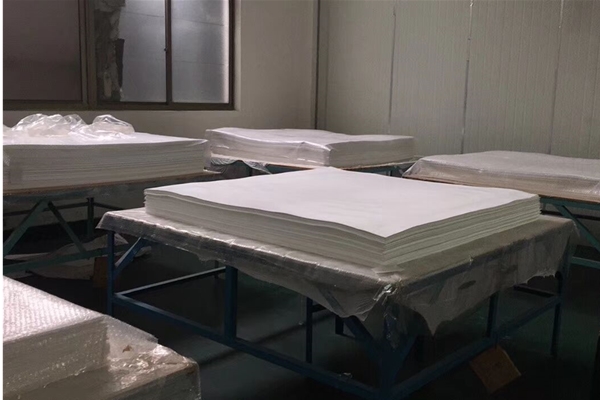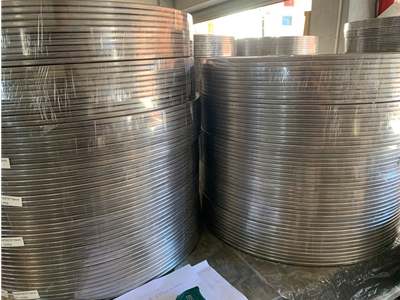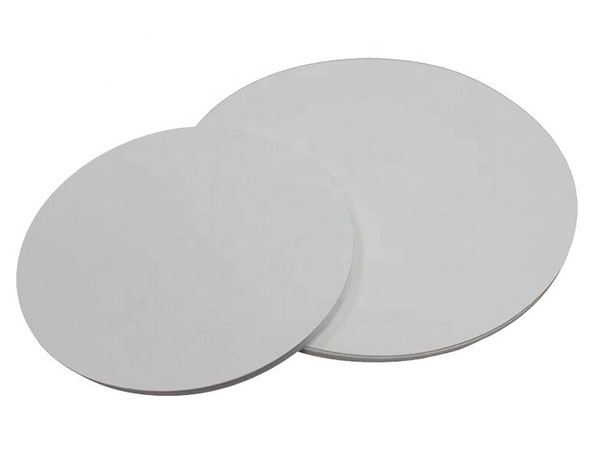Polytetrafluoroethylene (PTFE) is a high-molecular polymer whose main chain contains fluorine atoms. In PTFE molecules, fluorine atoms shield the C–C backbone, and the C–F bond has very high bond energy and exceptional stability. Except for alkali metals and elemental fluorine, PTFE is not attacked by chemical reagents. Because the fluorine atoms are symmetrically arranged and the C–F bond is covalent, the molecule has no free electrons and is overall neutral, giving PTFE excellent dielectric properties. The inert fluorinated “outer shell” also imparts outstanding non-stick behavior and a very low coefficient of friction.
PTFE exhibits an exceptional combination of properties: high temperature resistance, corrosion resistance, non-stick and self-lubricating behavior, excellent dielectric performance, and very low friction. When fillers capable of withstanding PTFE sintering temperatures are added, its mechanical properties can be greatly improved while retaining PTFE’s other advantages. Common fillers include glass fibers, metals, metallized oxides, graphite, molybdenum disulfide, carbon fiber, polyimide, EKONOL, etc. With suitable compounding, wear resistance and limiting PV values can increase by up to three orders of magnitude.
In sealing applications based on PTFE, two major product families are widely produced domestically: virgin PTFE gaskets and modified PTFE gaskets.
Virgin PTFE gaskets are made either by molding suspension PTFE into sheets (molded sheets) or by skiving from PTFE sheets/rods (skived sheets). Molded sheets often exhibit non-uniform density and lower softness; skived sheets, on the other hand, offer relatively uniform density. However, due to the process, the material retains a curled memory, which is unfavorable for installation.
Modified PTFE gaskets incorporate functional fillers into the PTFE resin to mitigate the deficiencies of virgin PTFE. However, such products are typically small-sized sealing elements directly compression-molded, limiting their coverage of wider gasket formats.
Therefore, there is a clear need for a superior sealing material, and expanded PTFE (ePTFE) provides exactly the new option.
ePTFE in Medicine (Background on Microstructure)
In the medical field, expanded PTFE (ePTFE) is a new polymeric biomaterial produced by stretching PTFE resin using specialized processes. It appears white, with excellent elasticity and flexibility, and forms a node-and-fibril micro-network containing innumerable micro-pores. The material can bend freely (over 360°), shows good hemocompatibility and resistance to biological ageing, and has been used in vascular grafts, cardiac patches, and other medical products. Decades of clinical use have demonstrated good biocompatibility; human tissue cells and micro-vessels can grow into the pores and form tissue integration.
In plastic surgery, the material commonly referred to as “ePTFE” is an expanded polytetrafluoroethylene surgical soft-tissue patch. Because of its special molecular structure—carbon chains encased by fluorine atoms—ePTFE is a highly stable synthetic material. With its node-and-fibril ultrastructure, controlling node spacing can guide the ingrowth of host cells. Unlike silicone rubber (which heals by fibrous encapsulation), ePTFE supports tissue-ingrowth healing, offering a natural appearance, low migration, and low complication rates; and because cell ingrowth into the micropores is limited, removal—if required—is not excessively difficult.
ePTFE in Industry — Why It Excels as a Sheet/Gasket Material
Industrial ePTFE is produced from dispersion PTFE using proprietary processing to create a multi-directional fibril and closed-micro-porous structure in a pure PTFE matrix. Typical porosity is 40–97%, with pore size 0.25–0.5 μm. ePTFE retains PTFE’s hallmark properties—chemical inertness, very low friction, broad service temperature window, excellent ageing resistance, non-toxicity, and non-contamination—while its fine, soft yet tough fiber network addresses PTFE’s traditional sealing weaknesses of creep and cold flow. Under compressive load, the fibers entangle, forming a denser, more uniform, gas- and liquid-tight structure with excellent anti-leak performance, maintaining a tight seal even in aggressive corrosive environments. This has solved several long-standing sealing challenges in chemical and petroleum processes.
However, domestic capabilities for producing pure ePTFE sheets remain relatively weak: there is not yet a complete, dedicated production process and full production line for ePTFE sheet manufacturing capable of meeting broad industrial demand.
A Complete Production Process and Equipment Set for ePTFE Sheets
To address current gaps, we provide a production process and purpose-built equipment for expanded PTFE sheet manufacturing. This end-to-end method and production line deliver high-performance ePTFE sheets efficiently, filling a technology gap in domestic production.
ePTFE Sheet Manufacturing — Process Steps
1, Cold storage & screening of PTFE dispersion resin
Store the resin below 18 °C for ≥12 h, then screen.
2, Add processing aids & mix
Add a defined proportion of aids to the screened resin. Weight ratio: PTFE dispersion resin 70–80, aids 20–30. Mix uniformly.
3, Maturation (conditioning)
Mature the mixed material at 45–75 °C for 12–72 h.
4, Preform into cylindrical billets & re-mature
Press into cylindrical billets (pressing pressure 2.5–5 MPa, then hold pressure 1–5 min). Mature for 5–10 h.
5, Extrude into cylindrical rods
Extrusion pressure 5–7 MPa, compression ratio 100–150, temperature 45–75 °C. Result is a cylindrical rod.
6, Calendar the rod into film
Calendar to obtain a sheet-like film.
7, Degrease, dry & stretch to semi-finished film
Control temperature at 200–280 °C; stretching speed 10–12 m/min, draw ratio 1.1–1.2×.
8, Longitudinal stretching
Temperature 200–280 °C; feed 1.5–2 m/min, take-up 8–16 m/min, draw ratio 5–8×.
9, Transverse stretching
Three zones: preheat 120–150 °C, expansion 200–250 °C, setting 300–380 °C; transverse speed 12–20 m/min; transverse draw ratio equal to longitudinal.
10, Multi-ply stacking & lamination
Stack multiple stretched films and laminate. Then:
– Preheat at 200–250 °C for 3–5 min;
– De-air at 350–380 °C for 15–25 min;
– Cool to 80–100 °C;
– Final setting at 80–100 °C with 1–2 min pressing.
11, Edge trimming
Trim edges to finish the sheet.
Dedicated Production Equipment
Automatic mixer (frame, mixing drum, gas–liquid spray system). The drum is mounted on guide rollers; a motor drives it via a transmission. The spray system includes an internal nozzle and a metering tank connected to an aid storage tank and a pump.
Billet former (fixed frame, barrel with cavity, movable press blocks on both sides, cylinders with push rods, magnetic rings on rods, and matching magnetic sensors on the frame).
Rod extruder (frame, insulated barrel with thermal oil, internal extrusion cylinder with conical guide & die, turntable at the die, and a movable press block & cylinder on the opposite side).
Calender (base, unwind, calender rolls, wind-up, and a guide plate aligned with the unwind).
Degreasing–drying–stretching unit (unwind, degreasing oven with aids recovery, buffer drying, stretching oven, rewind—each section with multiple rollers).
Longitudinal stretcher (feed, heating oven with internal bi-conical curve rolls—ellipsoidal drum with symmetric shafts—buffer cooling, and rewind; feed/buffer/rewind with multiple rollers).
Transverse stretcher (insulated chamber, transverse feed & take-up on both sides, internal heating and chain drive with evenly spaced film clamps; closing/opening mechanisms for clamps at feed/take-up sides; chamber segmented into preheat, expansion, and setting zones; chain spacing parallel in preheat, expanding through the expansion zone, and converging through the setting zone).
Stacking/lamination unit (worktable with movable clamps; lay-down section with unwind and reciprocating spreader; de-air forming section with heating box and nip rollers for air removal; setting section with a pressing plate for final consolidation).
Edge trimmer.
Our company designed, developed, installed, and commissioned the entire process and equipment set. We can now reliably and efficiently produce expanded PTFE sheets whose tensile strength, elongation at break, compressibility, recovery, and leakage rate all meet industry-leading standards. The sheets possess inherent anti-creep and anti-cold-flow characteristics, are easy to cut and install, and offer long service life. Except for a very small number of special chemicals, ePTFE does not react and applies to virtually all chemical sealing services. All sealing needs up to 600 °F (315 °C) can be satisfied.
These large-area, soft ePTFE sheets can be die-cut or hand-cut to shape. Cutting does not compromise sealing performance, and installation is straightforward regardless of flange geometry. Gaskets made from these sheets exhibit unique conformability, achieving tight seals on rough or damaged flanges without excessive bolt load, significantly extending flange service life. As the ultimate asbestos replacement, ePTFE sheeting gaskets inherit all advantages of PTFE while adding anti-creep and anti-cold-flow properties essential to sealing. Their ease of cutting, installation convenience, and long life enable use in nearly all sealing scenarios.




